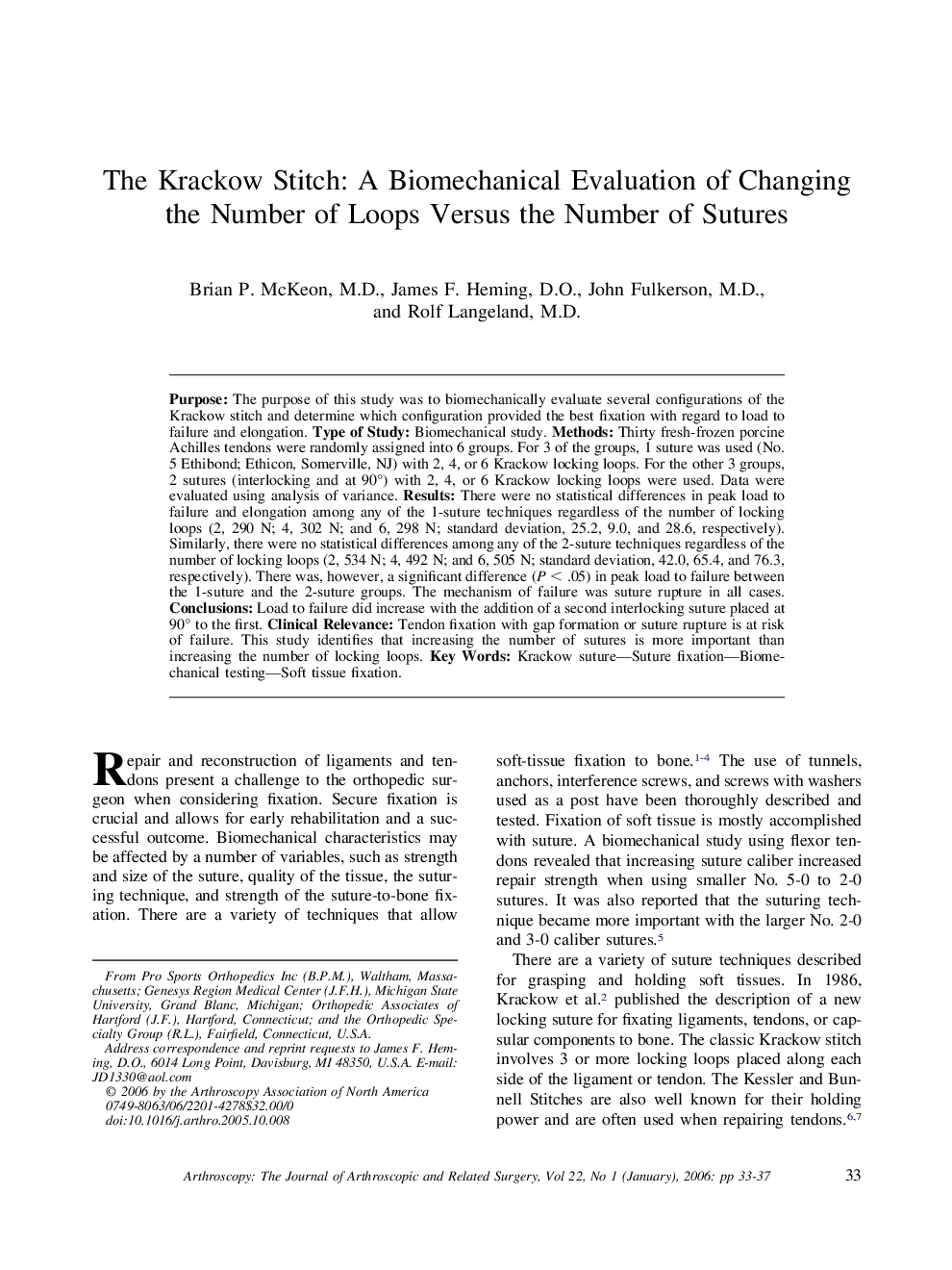| Article ID | Journal | Published Year | Pages | File Type |
|---|---|---|---|---|
| 4047395 | Arthroscopy: The Journal of Arthroscopic & Related Surgery | 2006 | 5 Pages |
PurposeThe purpose of this study was to biomechanically evaluate several configurations of the Krackow stitch and determine which configuration provided the best fixation with regard to load to failure and elongation.Type of StudyBiomechanical study.MethodsThirty fresh-frozen porcine Achilles tendons were randomly assigned into 6 groups. For 3 of the groups, 1 suture was used (No. 5 Ethibond; Ethicon, Somerville, NJ) with 2, 4, or 6 Krackow locking loops. For the other 3 groups, 2 sutures (interlocking and at 90°) with 2, 4, or 6 Krackow locking loops were used. Data were evaluated using analysis of variance.ResultsThere were no statistical differences in peak load to failure and elongation among any of the 1-suture techniques regardless of the number of locking loops (2, 290 N; 4, 302 N; and 6, 298 N; standard deviation, 25.2, 9.0, and 28.6, respectively). Similarly, there were no statistical differences among any of the 2-suture techniques regardless of the number of locking loops (2, 534 N; 4, 492 N; and 6, 505 N; standard deviation, 42.0, 65.4, and 76.3, respectively). There was, however, a significant difference (P < .05) in peak load to failure between the 1-suture and the 2-suture groups. The mechanism of failure was suture rupture in all cases.ConclusionsLoad to failure did increase with the addition of a second interlocking suture placed at 90° to the first.Clinical RelevanceTendon fixation with gap formation or suture rupture is at risk of failure. This study identifies that increasing the number of sutures is more important than increasing the number of locking loops.
